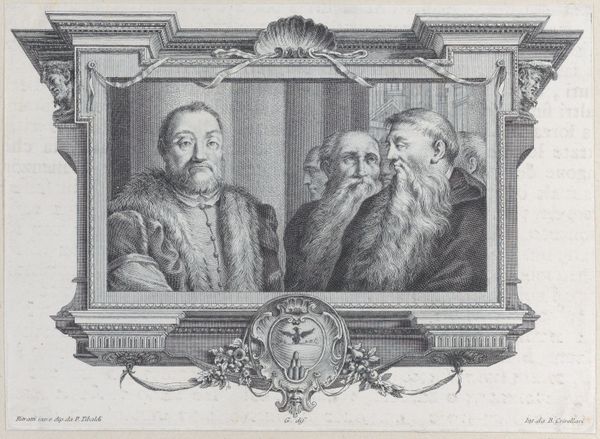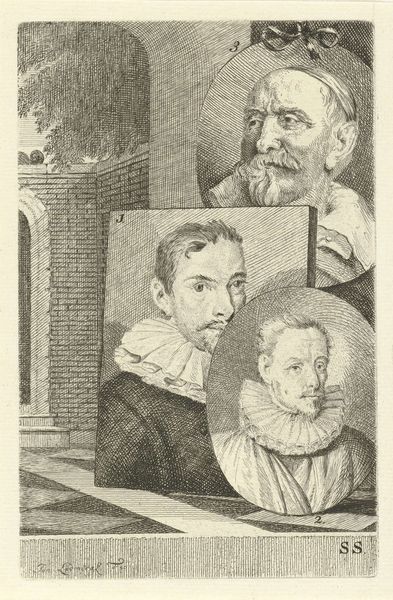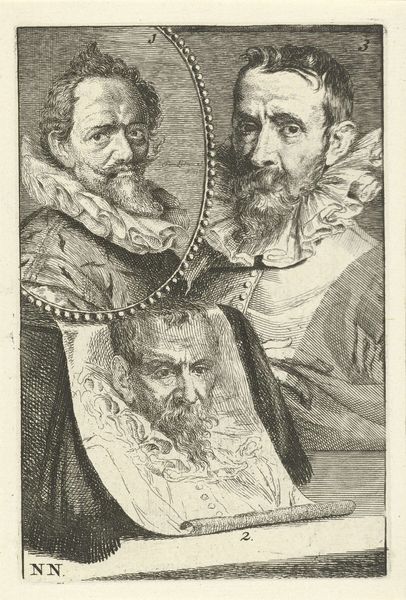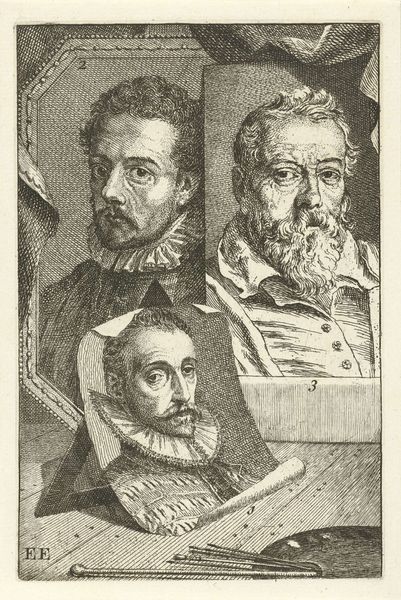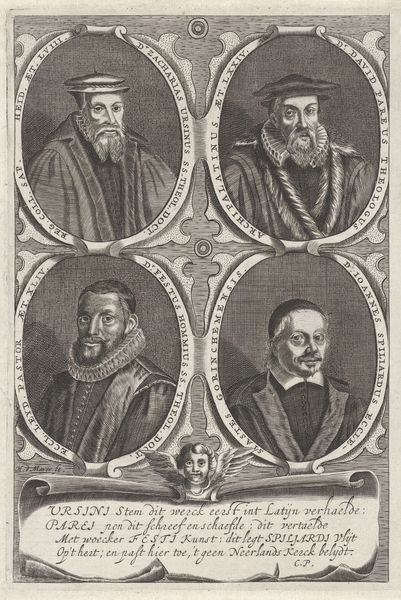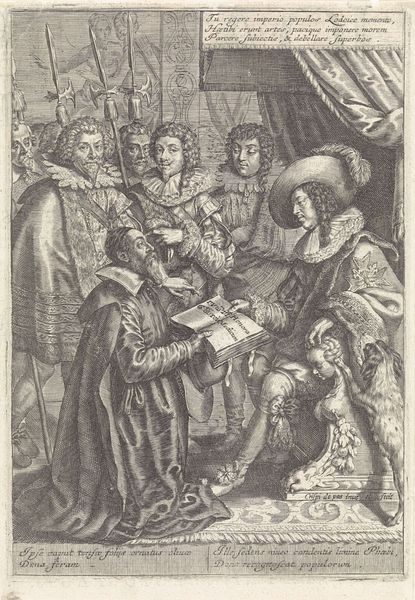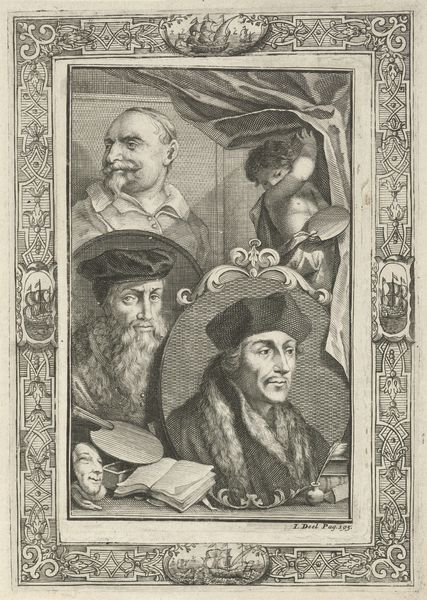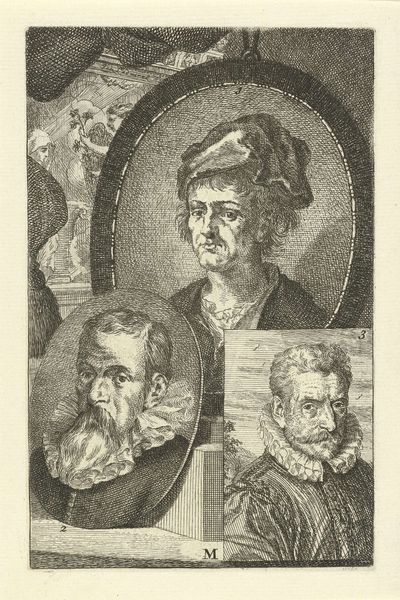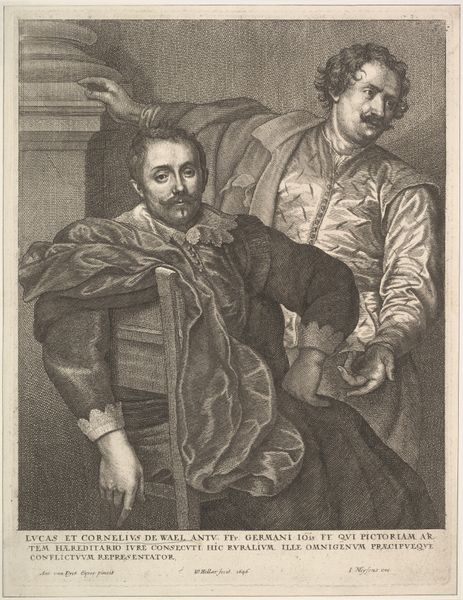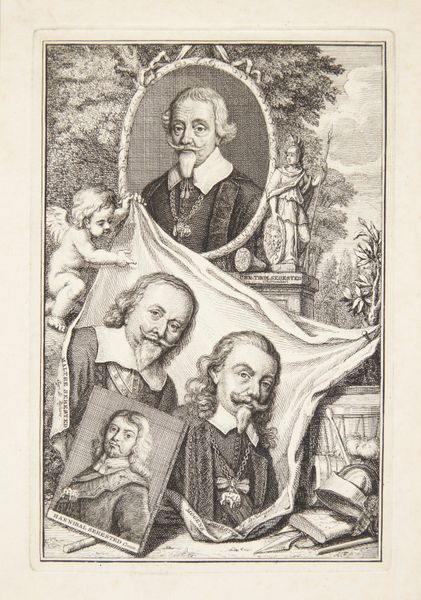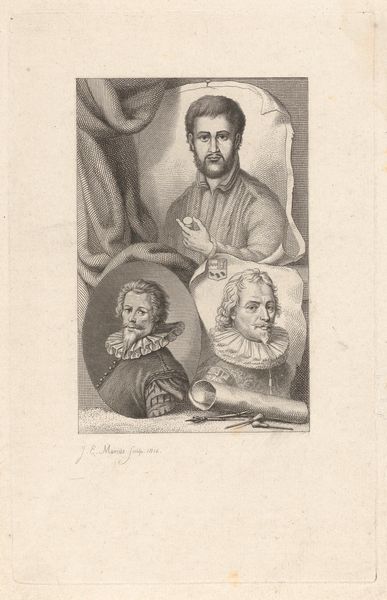
The Four Philosophers: Justus Lipsius, Hugo Grotius, Peter Paul Rubens, and Philip Rubens 1770 - 1782
0:00
0:00
Dimensions: Sheet (Trimmed): 15 13/16 × 11 3/4 in. (40.2 × 29.8 cm)
Copyright: Public Domain
Peter Paul Rubens made this print, "The Four Philosophers," after a painting of himself, his brother Philip, Justus Lipsius, and Hugo Grotius. It represents a coming together of intellectual minds in the Netherlands. Made around 1611, we can see a desire to solidify a shared culture in the wake of the Dutch Revolt against Spanish rule. The philosophers are gathered around a table laden with books, suggesting a commitment to learning and the life of the mind, but also a conservative attachment to classical learning. Above, a bust of Seneca gestures to the importance of Stoicism and self-control. In its imagery, the print speaks to the importance of education and reason in the construction of a new national identity, while the dog may represent loyalty to the past. As historians, we can trace the circulation of prints like this one, which were widely distributed and collected in albums, and the role they played in constructing public opinion. Prints like this give us insight into the social and political values that shaped the Dutch Golden Age.
Comments
No comments
Be the first to comment and join the conversation on the ultimate creative platform.

